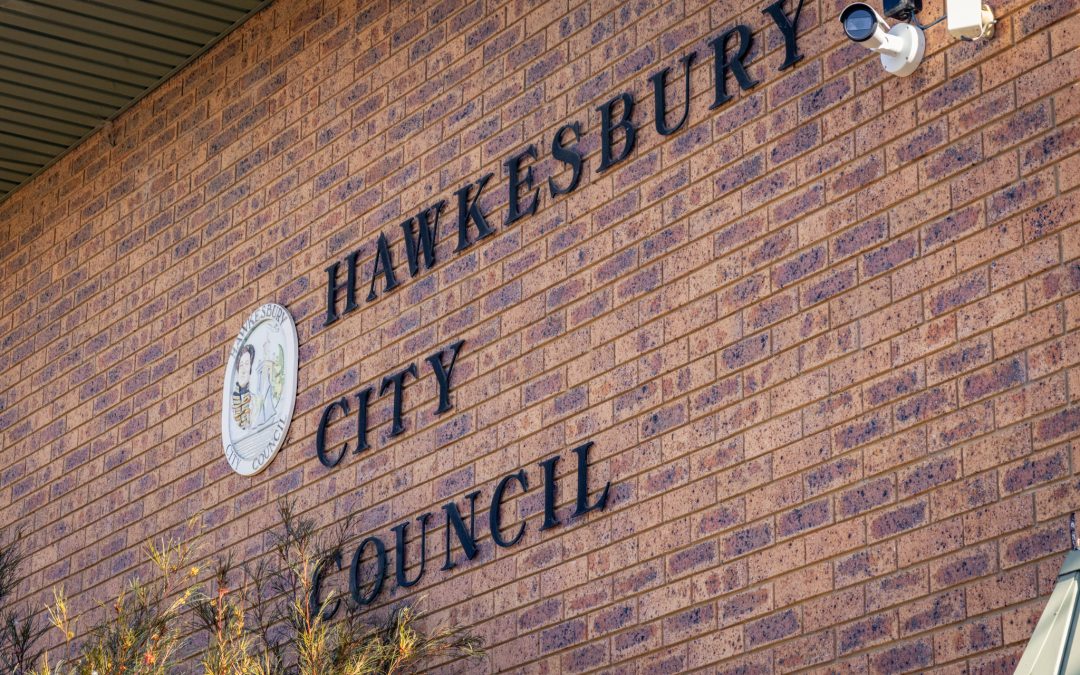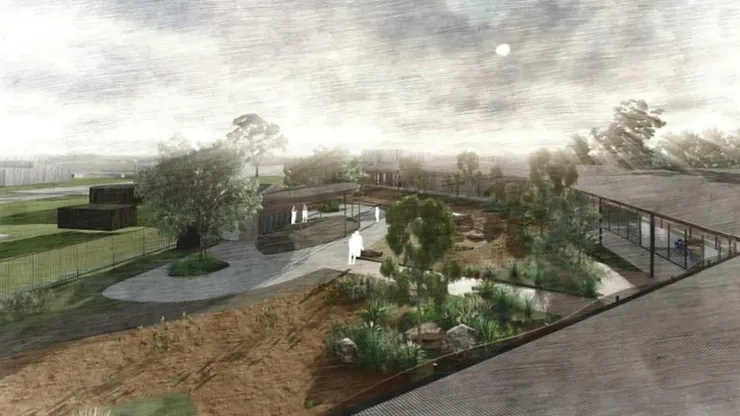Hawkesbury Post contacted all...


Hawkesbury Post contacted all...

In a heartwarming recognition of community...

After more than two decades of dedicated service, the...
The source of potentially dangerous PFAS chemical contamination in ground water at the Hawkesbury campus of Western Sydney University is almost certainly from landfill, not from RAAF Richmond, says the Environment Protection Authority.

Artist’s impression of planned Centre for Excellence in Agricultural Education…
The issue came to light publicly with the release of the April Progress Report on the planned Centre of Excellence in Agricultural Education – a $39m project.
The report said ‘elevated levels’ of PFAS were so high in groundwater below the land surface of the school site it could not be practically cleaned up sufficiently to allow the facilities to be built, with the University now looking for an alternative site on their campus for the build.
The news led to concerns from some nearby residents about whether PFAS chemicals had potentially got into drinking water.
An investigation back in 2018 into per- and poly-fluroalkyl substances (PFAS) contamination on and around the Richmond RAAF Base found a 10-square-kilometre plume of the chemical in groundwater. The PFAS contamination came from the use of legacy firefighting foam at the base, phased-out in 2004.
But a spokesperson for the EPA told the Post today – Wednesday – “it is likely that the source [at WSU] is contaminated fill brought onto the University of Western Sydney campus around 10 years ago. The EPA is making further inquiries into the source of the fill material.
“The EPA has seen no evidence that the contamination has travelled from the Richmond RAAF base or that the contamination has spread beyond the university campus.”
The EPA has been liaising with the WSU, the Department of Education and their contaminated land consultants since July 2022 about per- and poly-fluoroalkyl (PFAS) contamination at the site of the Hawkesbury campus.
“We requested additional investigations to confirm that there are no risks to human health or the environment,” said the spokesperson, who added, “the results of substantial testing show that the PFAS contamination is localised and focused on the former proposed development site for the Centre of Excellence in Agricultural Education”.
“Investigations have indicated there are currently no risks to human health or the environment for the existing and approved uses of the land.”
A spokesperson for the Department of Education told us, “as part of the site due diligence and proactive testing of groundwater, elevated levels of per- and poly-fluoroalkyl (PFAS) substances at Centre of Excellence site within the Western Sydney University (WSU) Hawkesbury campus were identified.
“The department has been actively working with WSU and the EPA to continue to test and monitor the site.
“The site within the campus is fully fenced and isolated from students.
“Alternate locations for the Centre of Excellence facilities are being explored and more information will be provided as it becomes available.
“Staff and students will continue to operate in the temporary facilities at the Richmond TAFE facilities in 2023 until the construction of the new Centre of Excellence is resolved.” the spokesperson said.
Residents’ concerns about PFAS getting into the drinking water supply have been dismissed by Sydney Water who have told the Post they routinely test the mains water supply and that there was no issue.
“Sydney Water routinely assesses its source water and implements monitoring programs to ensure the protection of public health,” a spokesperson said.
“Results from monitoring show that the drinking water at North Richmond Water Filtration Plant meets the requirements of the Australian Drinking Water Guidelines. NSW Health advised that the drinking water supply at North Richmond is safe to drink.”
But Stuart Khan who is Professor in the School of Civil & Environmental Engineering and Director, Australian Graduate School of Engineering (AGSE) at the University of NSW, and an expert on tracing organic contaminants during conventional and advanced water treatment processes, told us, “if I was advising on managing drinking water quality for Richmond, I would certainly identify this is a risk worthy of close, detailed and ongoing attention.
“On that basis, I think it would be reasonable to expect Sydney Water to have looked at the risk, have collected some data and have an official view of the degree of risk, and how they are managing it.”
We asked Sydney Water – twice – if they have tested the water supply specifically for PFAS and they would not comment.
The presence of PFAS in the environment does not necessarily mean there is a human health risk, says the EPA.
PFAS is primarily absorbed into a person’s system through ingestion, such as drinking contaminated water or eating contaminated food.
PFAS are a group of substances that include perfluorooctane sulfonate (PFOS), perfluorooctanoic acid (PFOA) and perfluorohexane sulfonate (PFHxS).
Due to their fire retardant, waterproofing and stain resistant qualities, these chemicals were widely used in industrial products and some types of fire-fighting foams worldwide.
PFAS can also be found in low concentrations in many consumer products including food packaging, non-stick cookware, fabric, furniture and carpet stain protection applications, clothing, and shampoo.
As a result, people are exposed to small amounts of PFAS in everyday life.
Products containing PFAS are being phased out around the world.
More information is also available on the EPA’s state-wide PFAS investigation program at www.epa.nsw.gov.au/pfas
And the EPA told us, if anyone wishes to discuss this matter further they can contact the EPA Environment Line on 131 555 or by email at info@epa.nsw.gov.au